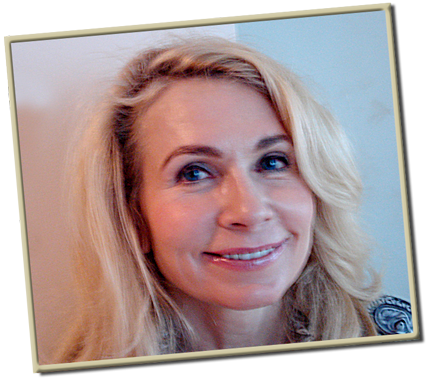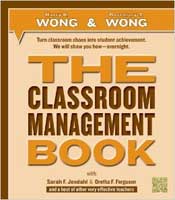|
 |

Special to the Gazette
March 2011
Learning Objectives: The Heart of Every Lesson
A Philadelphia Consulting Teacher We met Michelle Shields while working with the new teachers in the School District of Philadelphia in August 2010. She was in the audience as one of the consulting teachers, directed to work with new teachers and teachers who have received unsatisfactory ratings the previous year in the elementary, middle, and high schools. She was there to listen to our presentation and provide follow up and guidance to the teachers under her charge. During the course of the day, Michelle introduced herself to us and explained the school district’s concept of a consulting teacher. Click here to learn more. After years in the classroom, Michelle was asked to work with teachers on her Learning Objectives method. This was a natural fit as Michelle had presented this topic at regional meetings. Now, she was being asked to use her expertise to help teachers improve their instructional practices. Learning Objectives The research of John Hattie says: Simply tell students what they will be learning before the lesson begins A Learning Objective states what a student will be able to do once he or she has completed instruction. It is a specific, measurable, short-term, observable student behavior. Writing and implementing Learning Objectives in your classroom can have a major impact on the success of your students. Julie Johnson, a teacher in Minnesota says, “There is no secret as to what is expected of them. When I do this they all succeed.” As we say in The First Days of School, “If students know what they are to learn, you greatly increase the chances that the students will learn.” The concept of using objectives to serve as a learning target can be found in Chapter 21 in The First Days of School. Michelle says, “My teachers are writing and implementing the objectives and seeing great progress . . . telling students exactly what they expect (student outcomes) means that students have direction and are more on task!” Michelle believes the more clear and detailed the objectives are, the more likely students will succeed. Learning Objectives are the heart of every lesson. Objectives give a purpose to learning. They are the foundations for lesson planning. And they provide criteria for evaluating student achievement. A Learning Objective is a statement that tells the student:
Michelle’s teachers who use Learning Objectives with their instruction say, not only do students improve academically, but behavior problems significantly decrease. She attributes this to students knowing exactly what is expected of them, before the lesson even begins. Students do not have to interrupt the lesson for clarification of what is acceptable work. They know what they are supposed to do, the conditions in which they are to do it, and the desired outcome. Students are not only taught information, but they are taught how to succeed. Objectives Are Not Goals Michelle teaches the difference between a Learning Objective and a Goal. The terms are not interchangeable. A Learning Objective is not the same as a Goal. A Goal is a broad statement of a desired outcome. It explains
A goal might be to “understand,” to “acquire knowledge,” to “develop skills,” or to “appreciate.” A Learning Objective is a specific statement of observable behaviors which can be evaluated and which contribute to reaching the general goal. The statement
A Learning Objective is something specific you want the students to do. A Goal consists of numerous objectives that must be reached to achieve the outcome. A Girl Scout’s Goal might be to sell the most boxes of cookies and win a trip to space camp. Her Learning Objective would be to sell 50 boxes her first week. Her next Learning Objective might be to sell another 50 boxes the next week, then 100 boxes at her aunt’s wedding, and so on. Each Learning Objective is a small, specific behavior or building block, which ultimately leads to reaching the final goal. Writing a Learning Objective Michelle has created a four-part formula for writing a successful Learning Objective:
Using this formula a Learning Objective could be: Given a list of meteorological terms at the end of the lesson, the student will be After watching the debate, the student will be able to write a one page argument in Given a character in a piece of literature and several cartoons:
When sharing Learning Objectives with students, Michelle suggests writing them in terms of “You” will be able to and not “The student” will be able to. Using “You” keeps the objective personal and friendly. Create with the End in Mind A Learning Objective is always written with an end goal in mind. Work backwards. First, identify the overall goal. Then write each Learning Objective as a step towards reaching the goal. Writing a Learning Objective will help you select content, develop an instructional strategy, develop instructional materials, and construct tests and assessments that are congruent to the Objective. Therefore, they must be developed, planned, and written after the Learning Objective has been written and always with the Learning Objective in mind. 1. Audience Learning Objectives focus on student performance and not teacher performance. 2. Behavior Michelle says, “We ultimately want students to appreciate and understand, but those verbs are not observable and measurable. Include verbs like construct, compare, illustrate. Verbs that are measurable.” The choice of a verb is very important. As you look at the behavior portion of your Objective, focus on cognitive domain action words. These are verbs that describe a performance. A list of verbs that show actions can also be found on pages 236 and 237 in The First Days of School. Michelle says, “If the verb used in stating the objective identifies observable student behavior, then the basis for a clear statement is established.” 3. Conditions An effective Learning Objective clarifies the conditions in which the student is expected to perform. What will the student need in order to accomplish the Objective? These are examples of conditions students need to accomplish an Objective:
Conditions can also be used to give students limitations:
The conditions of an Objective state the circumstances, tools, materials, and references needed for the student to begin work on the behavior. 4. Criteria These are some examples of clear and measurable criteria:
When a clear criterion is given, students know exactly what they need to do to achieve the Learning Objective and they are more likely to be successful at achieving it. Aligning Objectives, Instruction, and Assessment With your lesson’s Learning Objectives written, the next step is to align them with the rest of your curriculum. Objectives are congruent with the instruction, learning activities, and the assessment. Develop your instructional strategies, materials for instruction, and assessment tools after the Learning Objectives for a lesson are established. This is an example Michelle shares with her teachers:
Objectives Are for Students Introduce the Learning Objective before the lesson begins. Clarify each component to the students—the specific behavior, the conditions, and the desired outcome. Tell students up front what they are going to learn, how they are going to learn it, and how they will be assessed to see if they have succeeded in learning it. Provide students with a copy of the Learning Objectives to refer to as the lesson progresses. Come back to the Learning Objective as you teach. At the end of the lesson, review the Learning Objective again in the context of the newly introduced material. Ask students to “check off” the Objective once there is agreement it is achieved. This provides a visual for students on their way to achieving the ultimate goal. Check off the Learning Objective in your plans as well to confirm your success in teaching it to the students. Learning Objective Pitfalls
Why Use Learning Objectives We know Learning Objectives take time to write. In fact, the longer you teach, the more you will fall into the trap of “I don’t need to use Objectives. I know what I want the students to learn.” But, remember, Learning Objectives are not for you, they are for your students. The research of John Hattie mentioned earlier in this column bears repeating: Simply tell students what they will be learning before the lesson begins What an incredible opportunity for students to increase their odds of success in your classroom—just give them a Learning Objective. But let’s not stop here, you can increase the odds of your students success even more! While doing the research on Lesson Objectives, John Hattie discovered something else: Give students a scoring guide or rubric to assess their learning Extensive research has confirmed the importance and significance of Learning Objectives as a means to increase student achievement. Our task is to provide students with every opportunity to be successful in the classroom. Knowing how to write a Learning Objective is an effective tool for you to produce successful students. There is only one way to improve student achievement and it is not with more books, more money, more programs, smaller class sizes, longer school days, laptops for everyone . . . . The only way to improve student achievement is with an effective teacher. Your Learning Objectives
|
|||||||||||||||
|
 F
F






